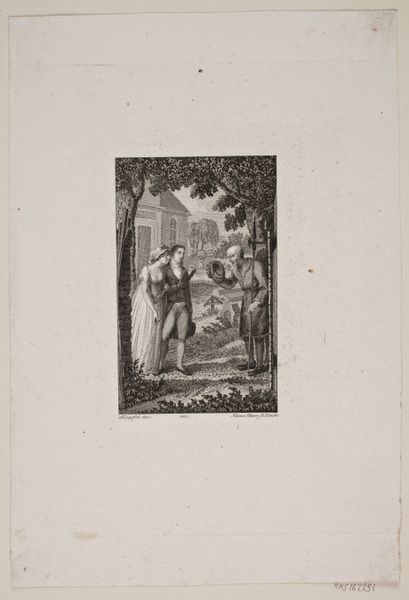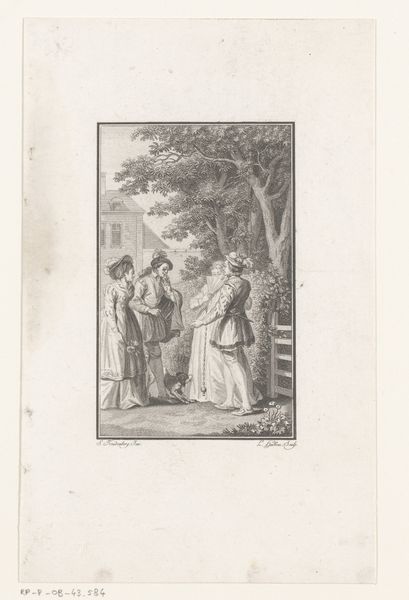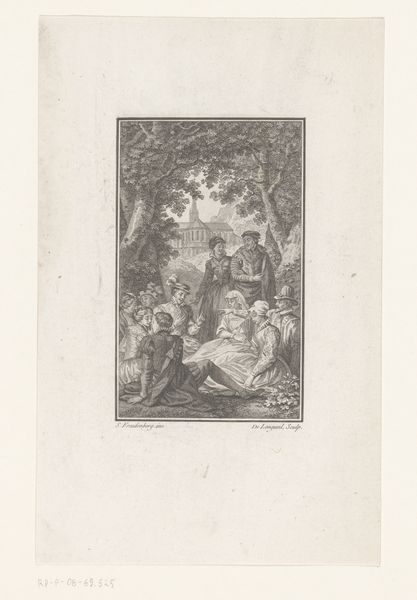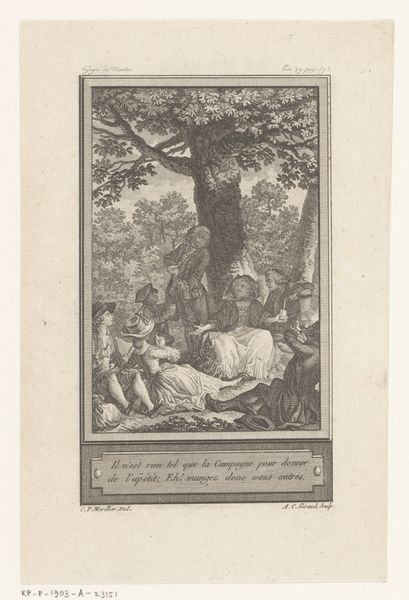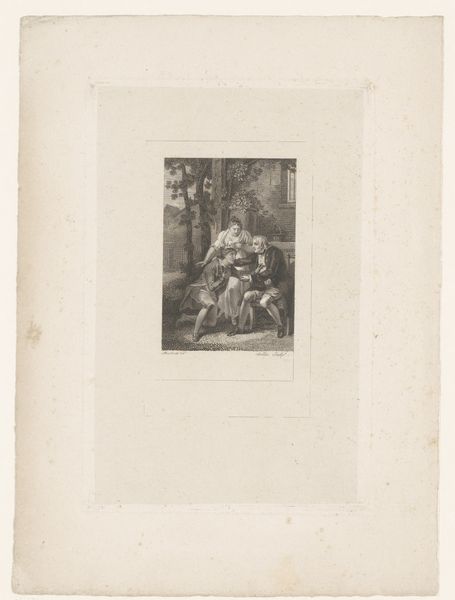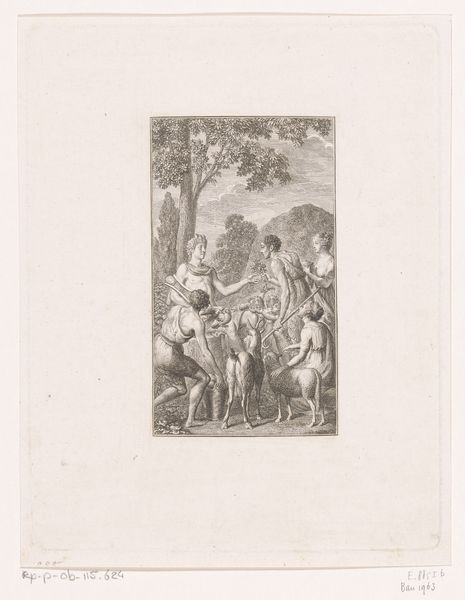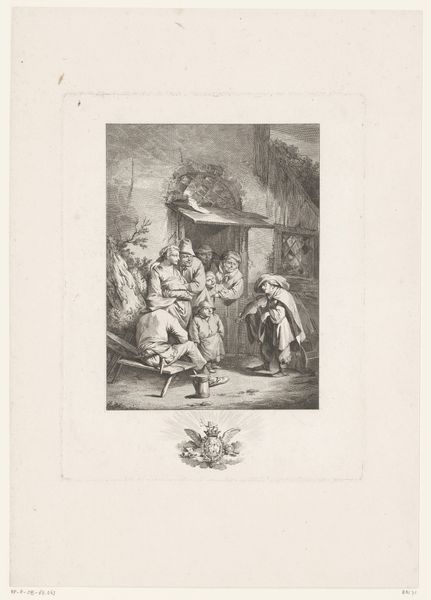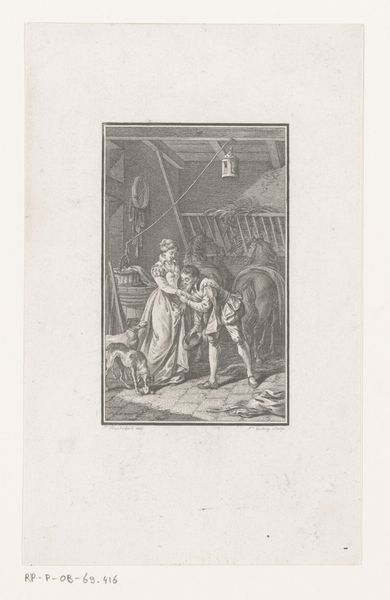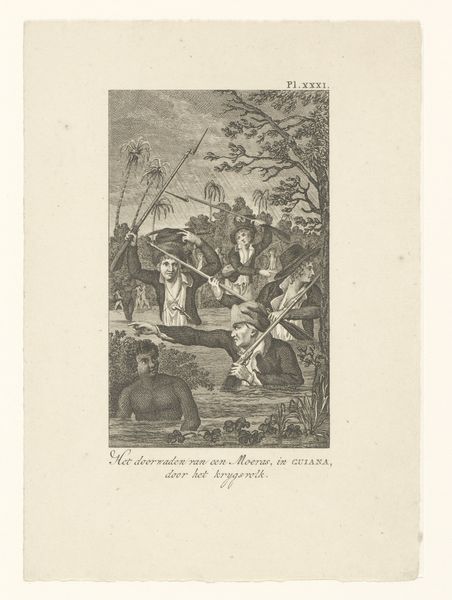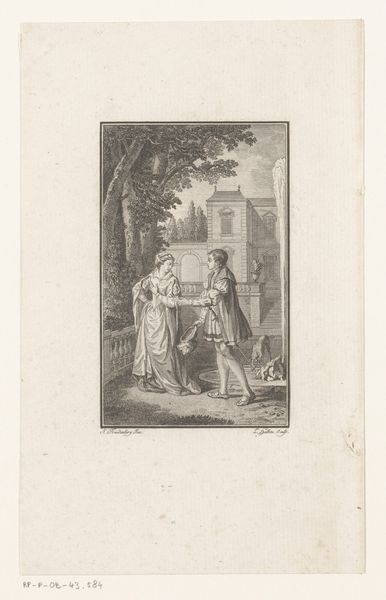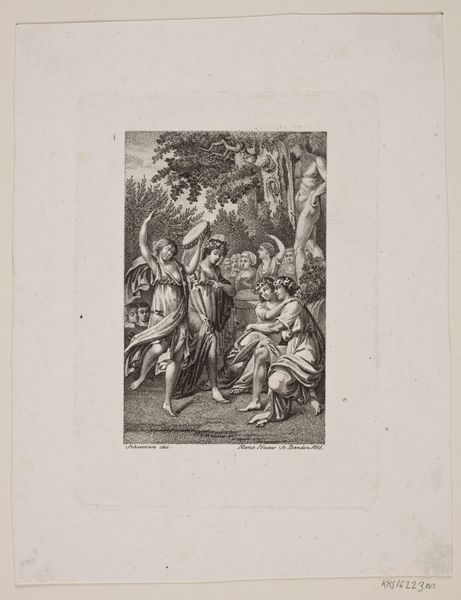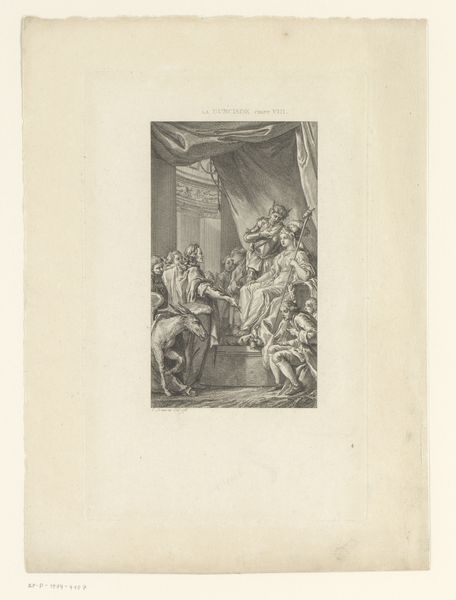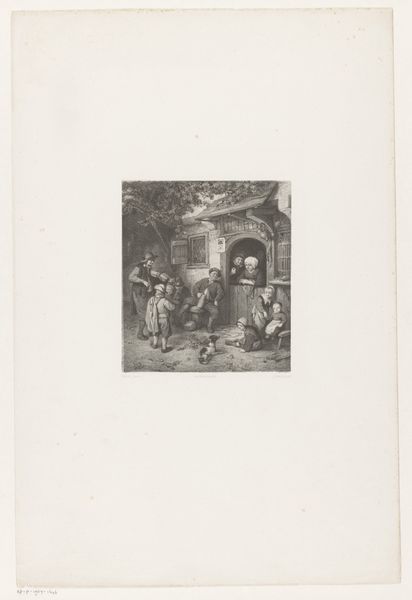
Mannen en vrouwen vluchten door een deuropening naar buiten 1750 - 1779
0:00
0:00
carlleberechtcrusius
Rijksmuseum
Dimensions: height 153 mm, width 106 mm
Copyright: Rijks Museum: Open Domain
Carl Leberecht Crusius made this small etching called 'Men and women fleeing through a doorway' with ink on paper sometime in the late 18th century. The printmaking process is key to understanding this work. An etching begins with a metal plate, usually copper, coated in wax. The artist then scratches an image into the wax, exposing the metal underneath. The plate is submerged in acid, which bites into the exposed lines. The longer it soaks, the deeper the lines become. After removing the wax and inking the plate, it’s pressed onto paper, transferring the image. Think about the labor involved: the careful application of wax, the precise scratching of the image, the controlled use of acid. This wasn't just a quick sketch. Crusius invested time and skill, creating a matrix that could produce multiple impressions. The image could then be circulated and consumed. This little print embodies the complexities of production, skill, and social circulation in the 18th century, challenging any simple divide between art and craft.
Comments
No comments
Be the first to comment and join the conversation on the ultimate creative platform.

